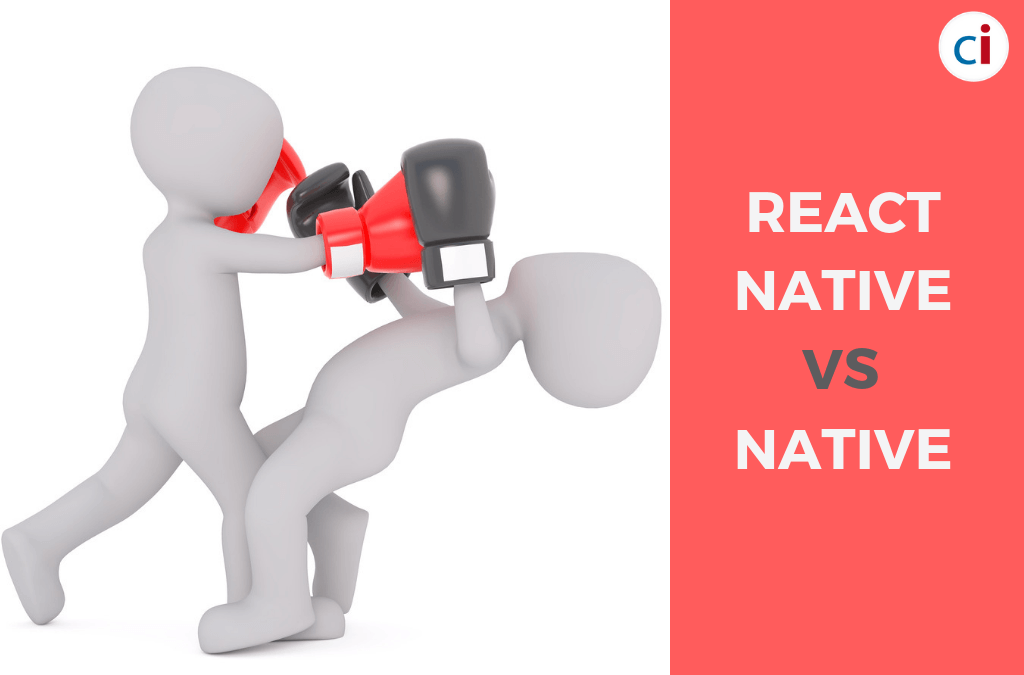React Native has become popular in recent years because it helps cater to both iOS and Android development. Hence, giant companies like Facebook, Instagram, Skype, Tesla, Walmart, Baidu Mobile, Bloomberg, UberEATS, Vogue and many more are focussing on this service.
It helps create mobile apps with the help of JavaScript development only, which is supportable on both Android and iOS platforms. Therefore, using this framework fills the gap between focusing on a wide marketplace (which constitutes of Android users) and making the profit (from iOS users).
What is React Native and Why is it Used?
React Native is a JavaScript framework for writing real, natively rendering mobile applications for iOS and Android. It’s based on React, Facebook’s JavaScript library for building user interfaces, but instead of targeting the browser, it targets mobile platforms.
It is written using a mixture of JavaScript and XML-esque markup, known as JSX. Then, under the hood, the React Native “bridge” invokes the native rendering APIs in Objective-C (for iOS) or Java (for Android). Thus, your application will render using real mobile UI components, not webviews, and will look and feel like any other mobile application.
It is used for the following reasons:
- For mobile developers accustomed to working on the Web with React, it becomes possible to write mobile apps with the performance, look and feel of a native application, while using familiar tools.
- The React Native community has baked strong developer tools and meaningful error messages into the framework, so working with robust tools is a natural part of the development experience.
How does React Native Development work?
There are two important threads running in the React Native.
One of them is the main thread, which runs in each standard native app. It handles displaying the elements of the user interface and processes user gestures. The other one is specific to React Native. It executes the JavaScript code in a separate JavaScript engine. The JavaScript deals with the business logic of the application. It also defines the structure and the functionalities of the user interface.
These two threads never communicate directly and never block each other.
How do the two threads interact?
Between these two threads is the so-called bridge, which is the core of React Native. The bridge has three important characteristics:
- It enables asynchronous communication between the threads. This ensures that they never block each other.
- It transfers messages from one thread to the other in an optimized way.
- The two threads never share or operate with the same data. Instead, they exchange serialized messages.
How React Native Mobile Apps Help Get to Market Faster
- It can cater to both iOS and Android platforms. Initially, it was developed by Facebook to support iOS, however, since it can support Android, the library can now render mobile UIs for both platforms.
- The React Native’s building blocks are reusable “native components” that compile directly to native. The components in iOS or Android have counterparts right in React, ensuring the feel and look of the app to be consistent and good.
- Businesses that want to augment an existing app but don’t want to overhaul it can incorporate React Native components into the app’s code. Even if the existing hybrid app was built with Cordova and Ionic, the Cordova-based code could be reused easily with a plugin.
- React Native is easy to pick-up with the knowledge of JavaScript. It allows any front-end web developer to be a mobile developer. There is no need to learn iOS’s Swift or Java for Android; knowing JavaScript, some native UI elements, platform APIs, and any other platform-specific design patterns would be enough for the developer.
- Compared with JavaScript frameworks like Angular or MeteorJS, React Native is UI-focused, making it more like a JavaScript library than a framework. The resulting UI is highly responsive and feels fluid thanks to asynchronous JavaScript interactions with the native environment. This means the app will have quicker load times than a typical hybrid app, and a smoother feel.
- It offers third-party plugin compatibility. This means that the developers won’t have to rely on a WebView for certain functions.
Why Industry is Opting For React Native Development
In the field of Mobile App development, high performing with quality native applications is developed to survive in this increasingly fast-paced world. The mobile application is solving the business motto of brands and their services, whereas the users are taking the benefits of those services.
Here are some reasons for the huge community support that React Native has earned for mobile app development:
- Cross-Platform Compatibility: React Native was introduced in the industry for the iOS platform, but with time Facebook developed its support for Android as well. Its incredible capabilities and features allow developers to build both iOS and Android app through with one codebase.
- Fast Development Cycles: React Native comparatively offers the process of developing mobile application much faster. As the industry is aware that the development time shortens using open source components. Being an open-source project, React Native offer a lot of components available for use. Apart from that using the state management tool “Using Redux” helped React Native to reduce development times radically.
- Instant Live Updates: Live update is the reason that makes React Native sustain in the market. Developers find it convenient to develop the app with it as developers can push the updates to the user’s phone without following the app store update cycle. Hence, users can enjoy the updated versions of the app instantly.
Essentially, React Native Development Services should be used as it is emphasizing the profits only in one efficient in both iOS and Android platforms, aiding to increasing profits in both the markets, instead of one.
Since it employs JavaScript, it is easy to use for mobile app development and eases the developer’s experience. It is essential to outsource React Native Development Services and other variations, to ensure acquiring the appropriate service for the company. In order to ensure the benefits garnered from React Native Development Services, partnering with React Native Development Company would be helpful and useful.



